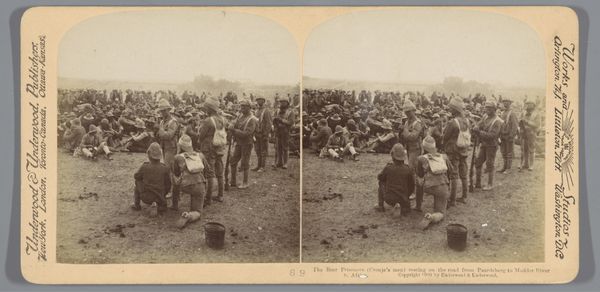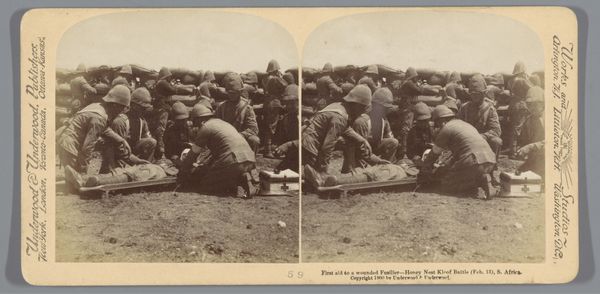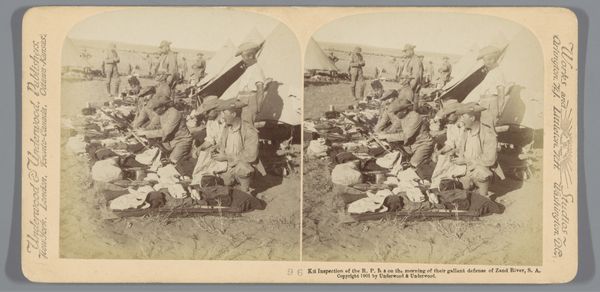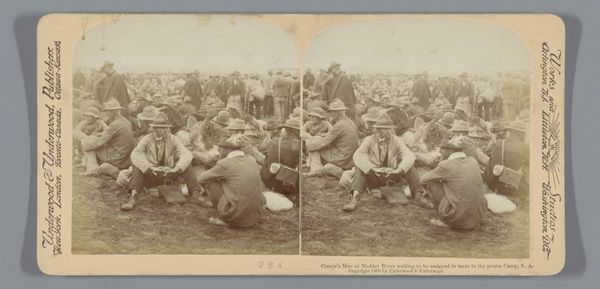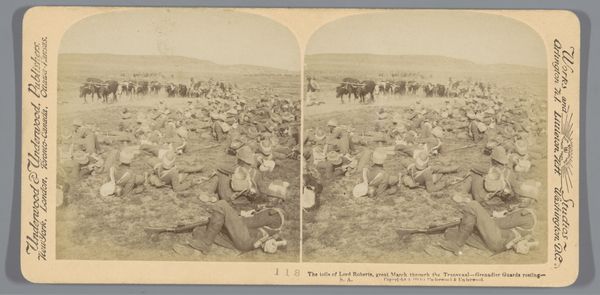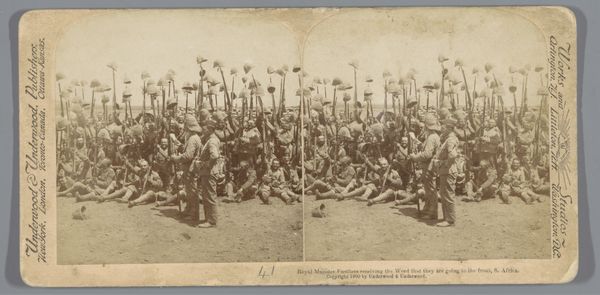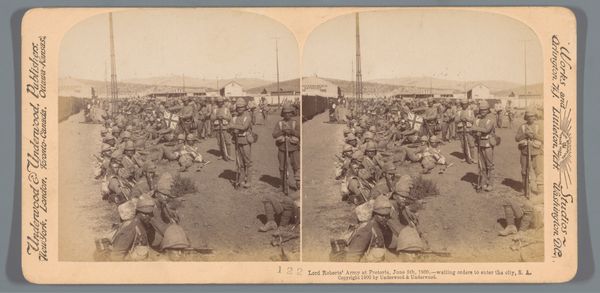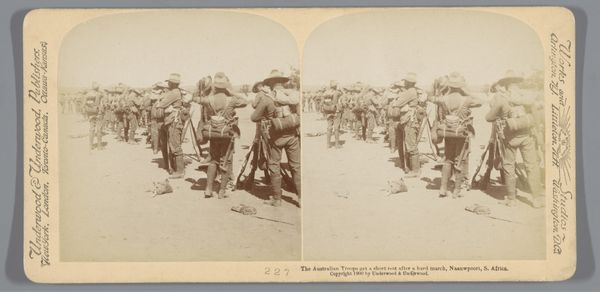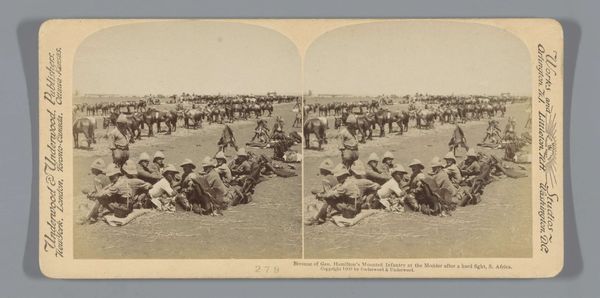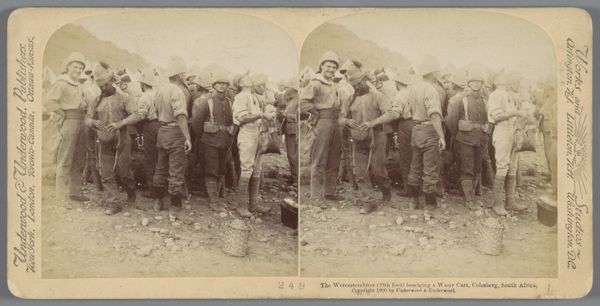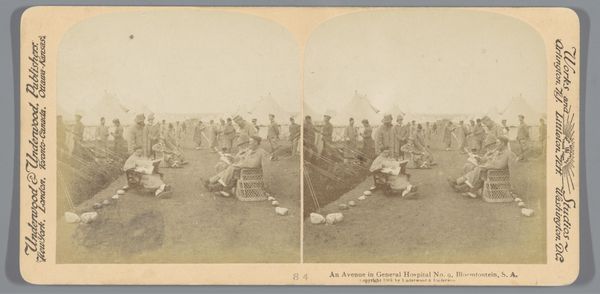
Boeren onder bevel van Generaal Cronjé (Pieter Arnoldus Cronjé) die zich hebben overgegeven aan het Britse leger na de slag van Paardeberg, 27 februari 1900
0:00
0:00
print, photography, gelatin-silver-print
# print
#
landscape
#
photography
#
gelatin-silver-print
#
history-painting
#
realism
Dimensions: height 88 mm, width 178 mm
Copyright: Rijks Museum: Open Domain
Curator: This striking gelatin silver print captures a moment laden with historical significance. The image, dating back to 1900, depicts "Boers Under Command of General Cronjé Surrendering to British Troops after the Battle of Paardeberg on February 27th." Editor: The immediate impression is of weary defeat. There's a pervasive sense of stillness and resignation, all rendered in these shades of grey, like dust settling after a storm. A great number of individuals seem to squat listlessly in the dirt, emphasizing a raw physicality—the land and its people bearing the brunt. Curator: Exactly. Understanding the materiality of the photograph helps us appreciate its accessibility at the time. Prints like this circulated widely as affordable documents and even as souvenirs during the Second Boer War. It shaped public perception and influenced the socio-political landscape. Editor: Thinking about the sheer labor involved... preparing the chemicals, the printing, and dissemination – and contrasting that against the stoic weariness of the Boers… What was the photographer’s labor worth? And how much more to the companies producing it? Who profited, and at what cost? Curator: Precisely! Photography at the time played a key role in constructing narratives around empire and military campaigns. Consider how this image may have been used to bolster British national identity. Was it objective documentation or propaganda disseminated through Underwood & Underwood Publishers? Editor: I’d argue the image itself belies any claims of pure objectivity. Consider its composition – an anonymous multitude. What choices in production went into making the photograph and therefore into controlling how many saw the work? Its widespread availability makes its control all the more compelling. Curator: Analyzing this photograph through a socio-historical lens forces us to confront uncomfortable truths. Images like these became essential instruments of both commemoration and justification, intertwined with the power dynamics of a global empire. Editor: Indeed. Studying the object—a mass-produced image depicting a historical moment—compels us to unpack not only what is shown but how and why it circulated, ultimately highlighting the labor, the economics, and the intended consumption. Curator: A photograph of surrendered soldiers speaks volumes of war—on both sides of the camera. Editor: Absolutely. Even from this distance in time, the weight of this historic surrender is still palpable.
Comments
No comments
Be the first to comment and join the conversation on the ultimate creative platform.
